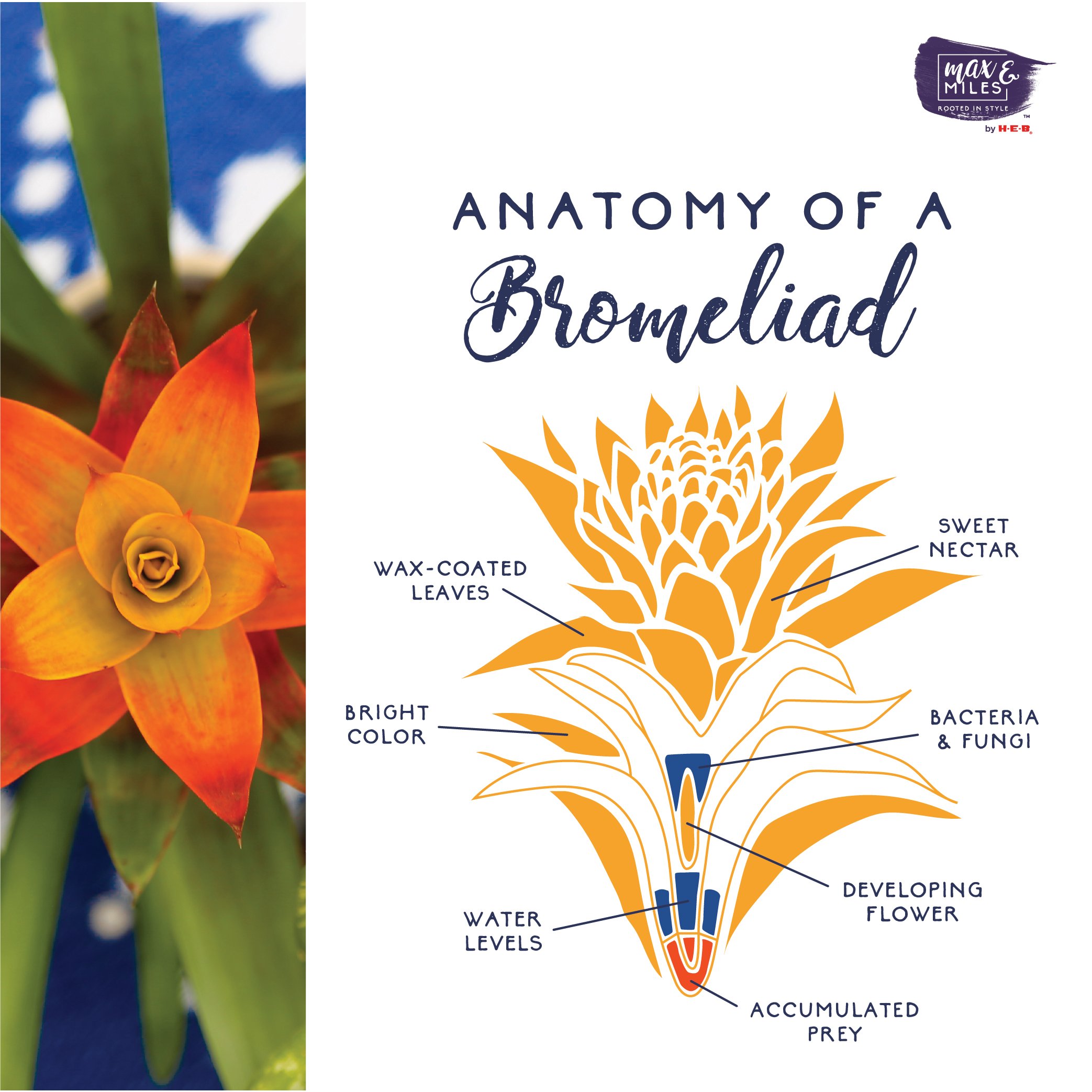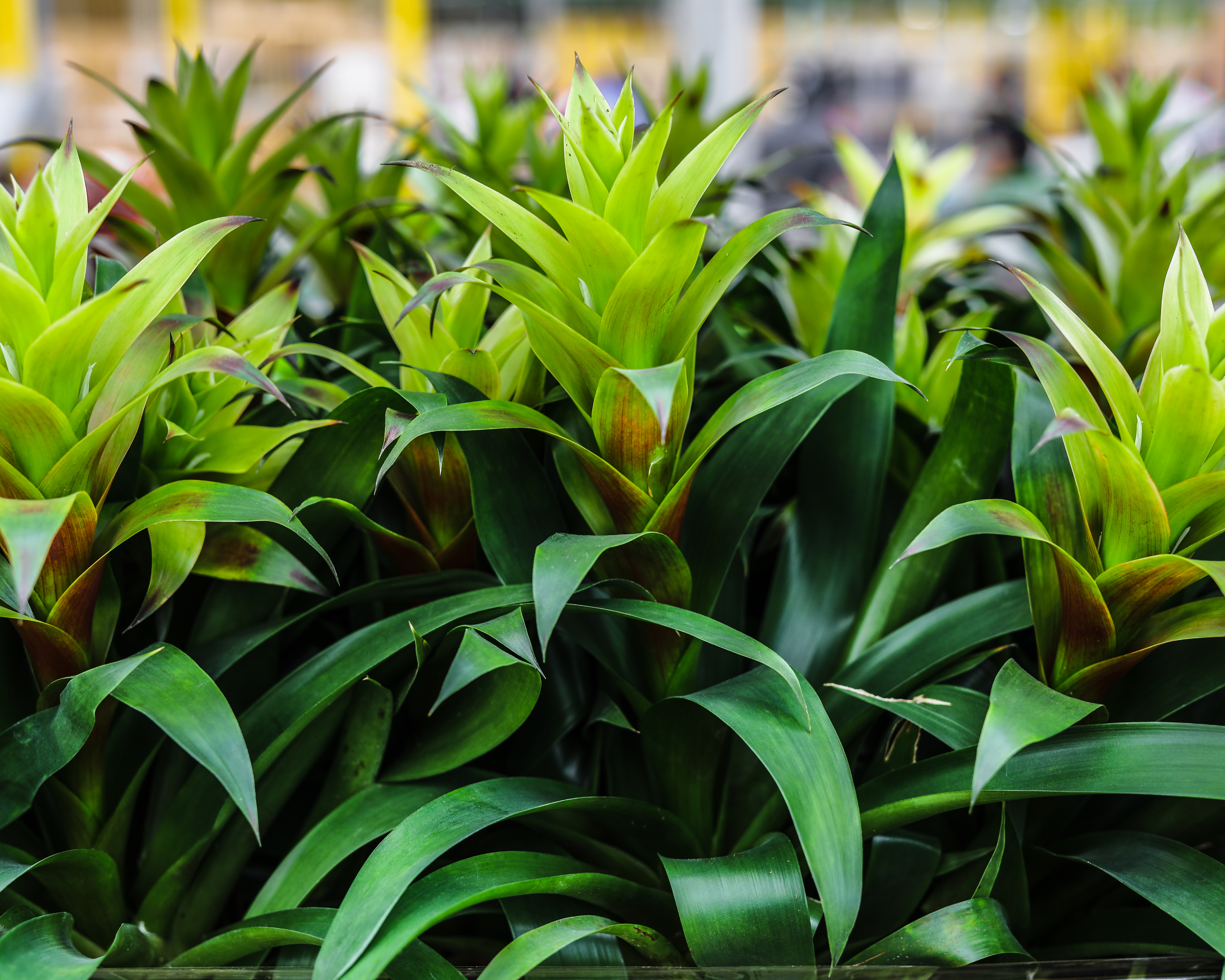Beautiful Bromeliads
Bromeliaceae is a wildly diverse family of plants that can be found from Africa to the Americas, living in coastal regions, thriving in cloud forests, and attached to rocks in the Andean high deserts. With such variability in these plants, it can be difficult to know just how to care for bromeliads. By breaking the family up into a few groups, we can better understand how these strange plants work and give them their best life!
Tank Bromeliads
Tank bromeliads are some of the most recognizable bromeliads. The most common tank bromeliads are found in the Guzmania and Vriesea genuses. With their bold and colorful central flowers, these plants absorb their water and nutrients from spaces in between their long, flat leaves, called tanks. In the wild, these tanks contain entire ecosystems of bacteria and fungi that help break down insects and small invertebrates that become trapped, feeding the plants! In caring for tank bromeliads, you will want to add water weekly to their tanks rather than wetting their soil. The roots present in their soil exist mostly to anchor them in place rather than to drink water.

Terrestrial bromeliads
Even within terrestrial bromeliads, there is great diversity. Cryptanthus is a family of drought-tolerant succulents that can live in sandy and nutrient-depleted soil. Ananas, which contain the very recognizable and delicious Pineapple plant, Ananas comosus, can grow in damp tropical and subtropical climates. Depending on the type of terrestrial bromeliad you have, you can add water directly to the soil.
Epiphytic bromeliads
You have probably encountered more epiphytes than you realize. Epiphytes are those plants that survive in the wild without soil, clinging to the sides of tree trunks like orchids or hanging in blankets from the bayou canopy like Spanish moss. These plants have developed ways to remove moisture from the air to serve as their water source. Examples of epiphytic bromeliads include those found in the Tillandsia genus - Spanish moss and air plants are bromeliads! Tillandsia have specialized trichomes on their leaves that absorb water and nutrients. Even when these plants are found in pots, it is their leaves, not the soil, that needs water. Tillandsias can be misted regularly or dunked in water - you can watch them turn from silver to bright green and their umbrella-shaped trichomes collapse and allow water to enter the leaves. Many tank bromeliads are also epiphytes, though they have their specialized tanks that absorb water rather than specialized trichomes.
The growing conditions of Bromeliads are as variable as the plants are themselves. It is best to identify what kind of bromeliad you have prior when choosing a place for it to live. In general, these plants will prefer bright, humid locations protected from intense direct sunlight.
It is easy to get discouraged when you see the flowers of your bromeliad begin to fade after a few months, with the remainder of the plant eventually following. This is a normal part of the bromeliad life cycle! Bromeliads have a lifespan of about 2 to 5 years, and by the time they reach your home, they are fully mature and flowering. While they are flowering, they are also beginning the process of producing offspring, called pups. Once the mother plant puts the remainder of her energy into the pups, they can be removed and potted into their own pots or attached to driftwood . So while bromeliads will not live forever, you can keep many generations of the same plant!
What is your favorite weird bromeliad? Let us know on our Facebook or Instagram pages!








